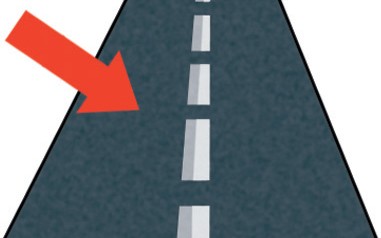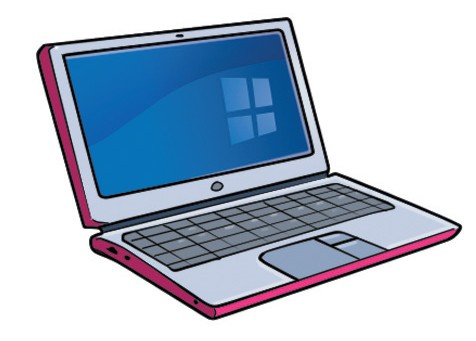MOSCOW INTERACTIVE
 Read the words and drag them to the corresponding pictures.
Read the words and drag them to the corresponding pictures.
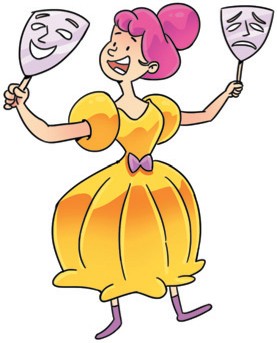 |
|
|
|
|
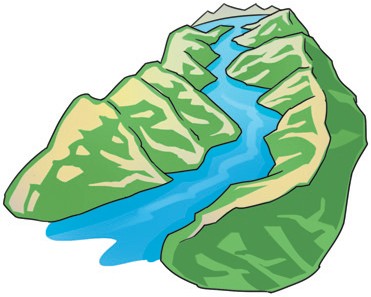 |
|
 |
|
 |
|
 Listen and read.
Listen and read.

My name is Anton and I’m 10 years old. I live with my mum and dad in Moscow, in Izmaylovo.
My mum’s name is Maria and she is an actress. She is very beautiful, with long fair hair. My mum is really kind and friendly, too. I do a lot of fun things with my mum. She can swim very well and we often go to the pool together.
I like to watch films with my mum in them. In her films she can be young or old. She can fly over houses and across rivers. She can even ride a skateboard on her head! She can do everything! My friends think she is a really wonderful mum!
My dad’s name is Pavel. He is tall and handsome and also very funny and kind. My dad has got an interesting job. He is an architect. The word ‘architect’ is a Greek word that means ‘the main builder’! My father makes plans for new buildings in Moscow. He also rebuilds old houses. Architects have got an important job because they make sure the places where people live and work are comfortable and attractive. I think my dad is great.
I love my wonderful family!

 Read again and answer the questions.
Read again and answer the questions.
|
1 How old is Anton? |
|
|
2 Where does he live? |
|
|
3 What is his mother’s job? |
|
|
4 What does Anton’s mother look like? What is she like? |
|
|
5 What is his father’s name? |
|
|
6 What does he look like? What is he like? |
|
|
7 What is his job? |
|
|
8 Why have architects got an important job? |
|
Who is talking? Read and say Anton’s mum or Anton’s dad.

1 Anton’s mum Anton’s dad
2 Anton’s mum Anton’s dad
3 Anton’s mum Anton’s dad
4 Anton’s mum Anton’s dad
5 Anton’s mum Anton’s dad
6 Anton’s mum Anton’s dad
 Find the opposites of the words below in the text.
Find the opposites of the words below in the text.
|
1 ugly ≠ |
beautiful |
|
2 short ≠ |
|
|
3 old ≠ |
|
|
4 boring ≠ |
*Now, use the adjectives to describe members of your family.

Over to you: Answer the questions.
|
1 How old are you? |
|
|
2 Where do you live? |
|
|
3 What is your mum’s job? |
|
|
4 What does your mum look like? What is she like? |
|
|
5 What is your dad’s name? |
|
|
6 What does he look like? What is he like? |
|
|
7 What is his job? |
|
Write about your wonderful family. Use the answers to the questions in Ex. 6.
 Read the words and drag them to the corresponding pictures.
Read the words and drag them to the corresponding pictures.
 |
|
|
|
|
 |
|
 |
|
 |
|
 |
|
 |
|
 |
|

 Read and choose. Then listen and check.
Read and choose. Then listen and check.

• Moscow is the capital city of the Russian Federation. It is an old city, around 860 years old.
• Travelling to and from Moscow is never a problem. It has got three 1)  , nine railway stations and two river 2)
, nine railway stations and two river 2)  .
.
• You can go everywhere in Moscow by metro. The Moscow Metro is one of the longest in the world. The city has also got a lot of bus, 3)  , and tram routes as well as 6 river transport lines.
, and tram routes as well as 6 river transport lines.
• Moscow is a very green capital. There are over 100 parks and many gardens and 4)  where people can rest or do sports to relax their mind and body.
where people can rest or do sports to relax their mind and body.
• Moscow is a capital filled with culture, too. There are over 170 theatres and 5)  . There also around 600 museums and art galleries, so there is no reason to ever get bored!
. There also around 600 museums and art galleries, so there is no reason to ever get bored!
• Moscow is a great city for children, too. They can enjoy the Moscow Zoo, or go to one of the two circuses in the city. There are also two botanical gardens where children can learn about plants and trees.
• For sports lovers, Moscow is a dream city. There are five big stadiums and a lot of pools and 6)  .
.
• The capital welcomes visitors from home and abroad. Today Moscow has got more than 360 hotels. A visit to Moscow will give you plenty to see and do and is definitely worth the trip!
Read the text again and say yes or no.
|
1 Moscow is around 860 years old. |
yesyesno |
|
2 The Moscow Metro can only take you to the city centre. |
yesyesno |
|
3 You can watch a film or a play in Moscow. |
yesyesno |
|
4 You can’t see wild animals in Moscow. |
yesyesno |
|
5 You can’t go ice skating in Moscow. |
yesyesno |
Janet is a tourist in Moscow. Answer her questions.
1. How old is Moscow?
2. Are there any parts?
3. How can I travel around Moscow?
4. Where can I relax?
5. Where can I go and learn about plants and trees?
Over to you: Find some more facts about Moscow. Present them to the class.
 Read the words and drag them to the corresponding pictures.
Read the words and drag them to the corresponding pictures.
 |
|
|
|
|
 |
 Listen and read.
Listen and read.

Today schools, kindergartens and hospitals in Moscow don’t look the same as in the past. They have got many different shapes, sizes and colours. Because these buildings are so interesting, they become the centre of each district. Architects now use modern materials and paint all kinds of designs on the front walls of schools. You can even say where your classroom is by looking at the design on the wall! There are also safe and beautiful playgrounds for sports and games near the schools.
Modern schools and kindergartens are just like robot-transformers! You can move the walls around inside the school, so you can turn classrooms into large common rooms and sleeping rooms into playrooms. How cool! Just like every person has got a different face, every building has got a different front wall, or face. Moscow schools are all different in colour and shape but they have all got one thing in common – every person and citizen can study there!

 Read again and match to make sentences.
Read again and match to make sentences.
|
1 Modern schools, kindergartens and hospitals |
|
|
2 These buildings are |
|
|
3 You can say where your classroom is |
|
|
4 There are safe and beautiful playgrounds |
|
|
5 You can turn classrooms |
 Find in the text ...
Find in the text ...
|
1 what we call schools for young children. |
|
|
2 a word that is the opposite of different. |
|
|
3 what we call the buildings we go to when we are ill. |
|
|
4 a word that is the opposite of boring. |
|
|
5 what we call places we go to when we want to have fun. |
Over to you: Imagine you are an architect. Design a new school. Think about:
1. What shape is it?
2. Is it big or small?
3. What colour(s) is it?
4. Is there a playground near it?
5. What can classrooms turn into?
 Read the words and drag them to the corresponding pictures.
Read the words and drag them to the corresponding pictures.
 |
|
|
|
|
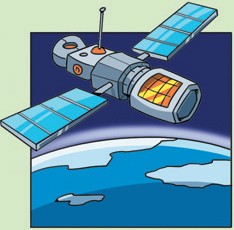 |
|
 |
|
 |
|
 |
|
 |
|
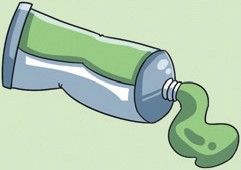 |
|

 Look, read and complete. Then listen and check.
Look, read and complete. Then listen and check.

Would you like to go on a space trip to distant 1)  right here in Moscow? Well, you can – just visit the Museum of Cosmonautics at VDNH!
right here in Moscow? Well, you can – just visit the Museum of Cosmonautics at VDNH!
The museum opened in 1981 to celebrate the 20th anniversary of the first manned 2)  around the Earth by 3)
around the Earth by 3)  Yuri Gagarin. Visitors to the museum find themselves in the fascinating world of space!
Yuri Gagarin. Visitors to the museum find themselves in the fascinating world of space!
There are models of the first 4)  – Sputnik, the first 5)
– Sputnik, the first 5)  , rockets and a 6)
, rockets and a 6)  .
.
You can also see models of Belka and Strelka, the first dogs to go into orbit and come back! There is an interesting film too, about the animals preparing for the trip.
In the big hall there is an exact copy of the Mir 7)  . You can go inside and find out about howcosmonauts live and work. You can even look out of the window and see a blue spinning ball – a model of the Earth that looks just like it does from space! On the space station you can find something very interesting – space food in 8)
. You can go inside and find out about howcosmonauts live and work. You can even look out of the window and see a blue spinning ball – a model of the Earth that looks just like it does from space! On the space station you can find something very interesting – space food in 8)  . Imagine that!
. Imagine that!
The museum organises evening activities where you can meet real cosmonauts. Wow! That’s a great way to spend an evening!
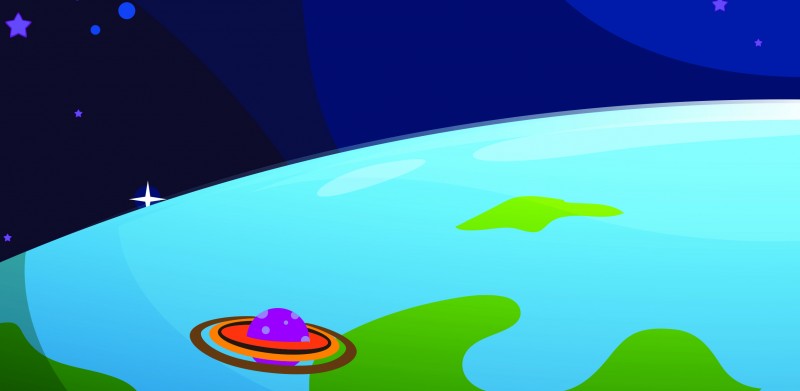
 Read again and complete the sentences.
Read again and complete the sentences.
|
1 The Space Museum is at ... |
|
|
2 The museum opened in ... |
|
|
3 The names of the first dogs in orbit were ... |
and |
|
4 You can go inside the ... and see how cosmonauts live and work. |
|
|
5 You can go to the museum in the ... and meet real cosmonauts. |

Think of another museum and answer the questions.
|
1 What is its name? |
|
|
2 Where is it? |
|
|
3 When did it open? |
|
|
4 What can you see and do there? |
Over to you: Write about a museum. Use the answers to the questions in Ex. 4.
 Read the words and drag them to the corresponding pictures.
Read the words and drag them to the corresponding pictures.
 |
|
|
|
|
 |
|
 |
|
 |
|
 |
|
 Listen and read.
Listen and read.

Moscow may be a big, busy city but there are still many green areas to enjoy. They include parks, gardens and forests. One of the biggest and most beautiful forests is in Izmailovsky Park, in the east of the city.
Izmailovsky Park has got a long history. There was a village there. Its name was Izmailovo. There’s an island in the park, too. There is an old palace on the island. There is also a pond as well as the river Serebryanka and many streams that run across the park.
A variety of amazing animals live in the park, including hares, squirrels, hedgehogs and moles. Over a hundred species of birds live there, too. You can find hawks, owls, woodpeckers and many sweet-sounding songbirds!
Izmailovsky Park is truly a place of wonder and it is the perfect place to go when you want to have a break! Today, there is a hotel near the park. You can stay there and enjoy the beauty of the area!

 What are their names? Use the words in bold from the text.
What are their names? Use the words in bold from the text.

| 1 | |
| 2 | |
| 3 | |
| 4 | |
| 5 | |
| 6 | |
| 7 |
 Read the text and correct the mistakes.
Read the text and correct the mistakes.
1 Izmailovsky Park is in the west of Moscow.
2 There was a forest in the park.
3 There is an old park on the island.
4 Today there is a village on the island.
5 Today, there is a river on the island.

Think of another park. Answer the questions.
1. What’s the name of the park?
2. Where is it?
3. What can you see there?
4. What animals live there?
Over to you: Write about a park. Use the answers to the questions in Ex. 5.
 Read the words and drag them to the corresponding pictures.
Read the words and drag them to the corresponding pictures.
 |
|
|
|
|
 |
|
 |
|
 |
|
 |
|
 |
|
 |
|

 Use some of the words from Ex. 1 in the right form to complete the text. Then listen and check.
Use some of the words from Ex. 1 in the right form to complete the text. Then listen and check.

Moskvoretsky Bridge
Today, the Moskvoretsky Bridge in Moscow is a long 1) with eight 2) , and it’s one of the busiest bridges in the city. It is very different from the old wooden bridge which used to connect Pyatnitskaya Street and Moskvoretskaya Street. But there is one thing that stays the same. The view of the city from the bridge is amazing!

Museum of Russian Desserts “Konfektnaya”
When you visit the Museum of Russian Desserts in Merzlyakovsky Lane, 15, it feels like you just travelled back in time to a sweet shop of the 19th century! There are old posters with ads for chocolate, 3) , caramels and sweets. You can also treat yourself to a real Russian tea party with traditional desserts made from recipes of long ago! And if that’s not enough, there are even classes where you can learn how to make sugar flowers and chocolate with berries, 4) and even flowers. How delicious is that?

Yuri Gagarin monument
The Yuri Gagarin monument in Leninsky Avenue in Moscow is a fantastic monument to the first man in space. A forty-two-metre 5) of the most famous cosmonaut in the world stands on top of a very high base. It really does make Yuri Gagarin look like the superhero he was in life!
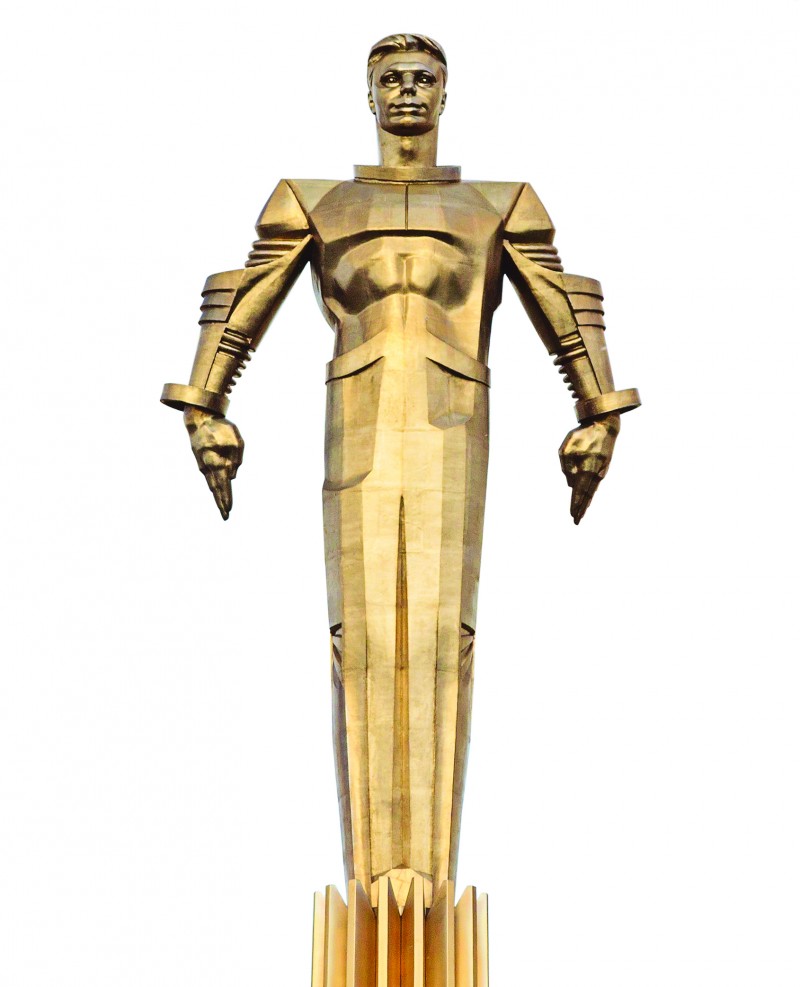
 Find the words and complete the sentences.
Find the words and complete the sentences.
|
1 SRARCHKL |
It is an bridge with lanes. |
|
2 TESUGARA |
You can learn how to make things from there. |
|
3 SBASETAU |
It is on a very high . |
|
4 MONUMENTSC |
This is in Leninsky Avenue. |
|
5 SSWEETSHOPUG |
It looks like a from the past. |
|
6 AVIEWMZILN |
The from there is amazing! |
Which of the places do the sentences in Ex. 3 refer to?
Read again and say.
| 1 |
Moskvoretsky BridgeMoskvoretsky BridgeMuseum “Konfektnaya”Yuri Gagarin monument |
| 2 |
Moskvoretsky BridgeMoskvoretsky BridgeMuseum “Konfektnaya”Yuri Gagarin monument |
| 3 |
Moskvoretsky BridgeMoskvoretsky BridgeMuseum “Konfektnaya”Yuri Gagarin monument |
| 4 |
Moskvoretsky BridgeMoskvoretsky BridgeMuseum “Konfektnaya”Yuri Gagarin monument |
| 5 |
Moskvoretsky BridgeMoskvoretsky BridgeMuseum “Konfektnaya”Yuri Gagarin monument |
| 6 |
Moskvoretsky BridgeMoskvoretsky BridgeMuseum “Konfektnaya”Yuri Gagarin monument |
Think of another interesting place in Moscow and answer the questions.
1. What is its name?
2. Where is it?
3. What is special about it?
Over to you: Make a poster about an interesting place to visit in Moscow. You can use the answers to the questions in Ex. 5. Present the poster to the class.
 Listen, point and repeat.
Listen, point and repeat.
 |
|
|
|
|
 |
|
 |
|
 |
|
 Listen and read.
Listen and read.

People are often not as understanding as they should be towards those who are different or have special educational needs. The most important thing that we must all remember is that we should treat everyone with respect.
In Moscow, the government and all the citizens try to make the city as people-friendly as possible. For example, there are wheelchair ramps, special lifts and even special tiles and signals for the blind. But is this enough? We should also give every citizen the opportunity to express themselves and develop their talents. In Moscow many organisations work with this goal in mind. One of them is a centre called ‘Integration’. Their motto is ‘Culture that is available for everyone!’ At the centre they work hard to make sure that everyone accepts and respects other people’s differences. The people at the centre encourage people with special needs to express themselves through music, poetry, literature and art. Because we are all equal when it comes to creativity!
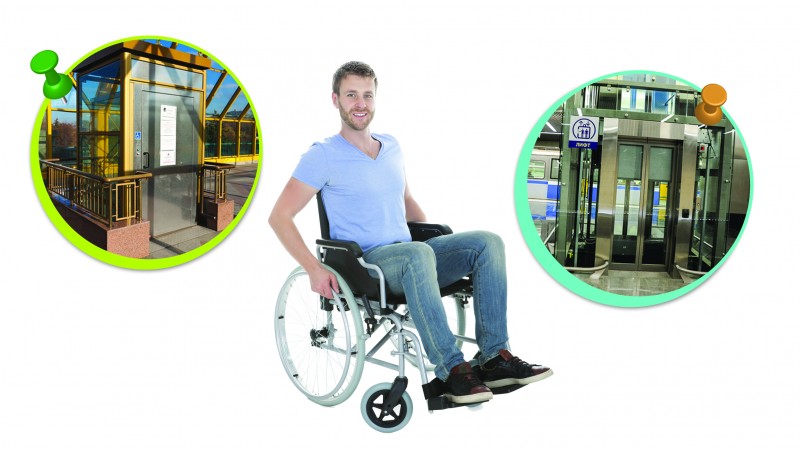
 Read again and match to make sentences.
Read again and match to make sentences.
|
1 We should treat everyone |
|
|
2 In Moscow the government and the citizens try to |
|
|
3 There are wheelchair |
|
|
4 There are special tiles |
|
|
5 A centre in Moscow |
|
|
6 People with special needs at the centre express themselves |
 Read, choose and complete.
Read, choose and complete.

| 1 | |
| 2 | |
| 3 | |
| 4 |
Over to you: You are members of a new centre for people with special needs. In groups, think of a name and a motto for the centre. Make a poster. Draw or attach some pictures.
 Listen, point and repeat.
Listen, point and repeat.
 |
|
|
|
|
 |
|
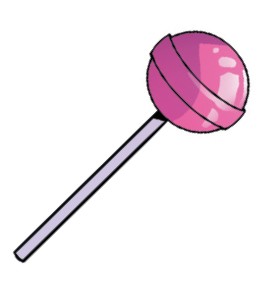 |
|
 |
|

 Look, read and complete. Then listen and check.
Look, read and complete. Then listen and check.

Everybody loves jam! Chefs from all over the world come to Moscow in August to take part in the Moscow Jam Festival. They bring a lot of different kinds of jam with them.
Every summer you can see big 1) 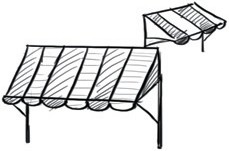 in places like Arbat Street, Pushkinskaya Square and Trevskaya Street. There is a delicious smell of berries and fruit everywhere. There are jams of all tastes and colours with names like ruby cherry, sunny 2)
in places like Arbat Street, Pushkinskaya Square and Trevskaya Street. There is a delicious smell of berries and fruit everywhere. There are jams of all tastes and colours with names like ruby cherry, sunny 2)  , and you want to try them all! There are some unusual jams, too – 3)
, and you want to try them all! There are some unusual jams, too – 3)  , walnut, watermelon and even green 4)
, walnut, watermelon and even green 4)  ! Would you like to try them?
! Would you like to try them?
There are also many different competitions to choose from such as ‘Guess what flavour this jam is?’ Could you tell the different jams apart? There are many other fun activities too. Sometimes chefs make huge 5)  or fruit pies and ask visitors to the festival to taste them! There are also fantastic mazes where you can walk around for hours trying to find the exit! Famous artists paint huge 6)
or fruit pies and ask visitors to the festival to taste them! There are also fantastic mazes where you can walk around for hours trying to find the exit! Famous artists paint huge 6)  of jam and you can enjoy their artwork in the open-air art gallery. So, if you have a sweet tooth and like doing something different, Moscow jam festival is the event for you. In Moscow, every summer is a summer of jam, fun and happiness!
of jam and you can enjoy their artwork in the open-air art gallery. So, if you have a sweet tooth and like doing something different, Moscow jam festival is the event for you. In Moscow, every summer is a summer of jam, fun and happiness!

 Read again and say yes or no.
Read again and say yes or no.
|
1 The Moscow Jam Festival is in the summer. |
yesyesno |
|
2 You can see big tents only in Arbat Street. |
yesyesno |
|
3 You can taste different kinds of jam. |
yesyesno |
|
4 You can take part in a competition. |
yesyesno |
|
5 Chefs make small lollipops for the visitors to taste. |
yesyesno |
|
6 You can see paintings of jam. |
yesyesno |
Imagine you are a famous chef. Make your own unusual jam. Present it to the class.
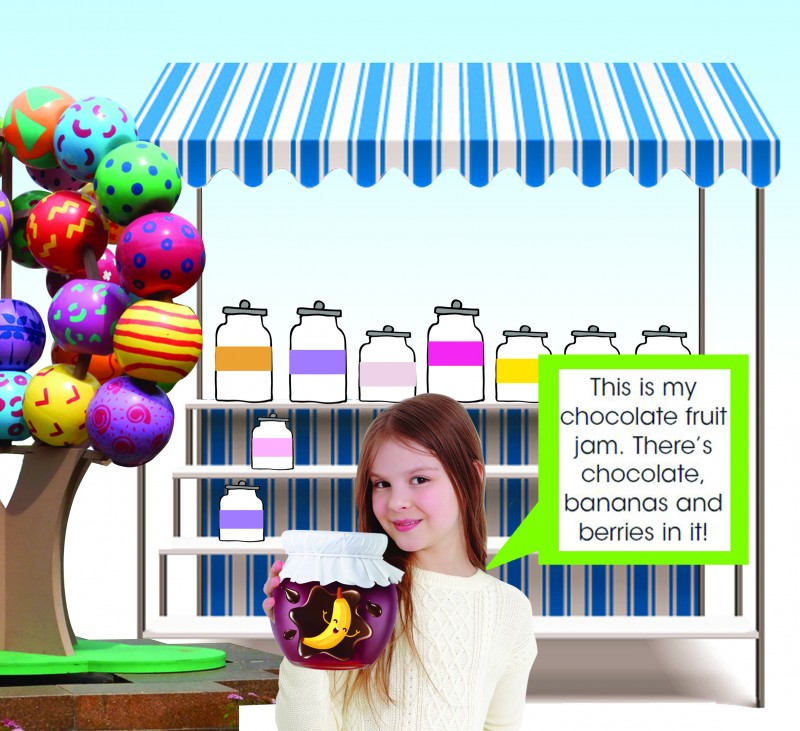
Think of a festival and answer the questions.
1. What is the name of the festival?
2. When is it? Where?
3. What can you see and do there?
Over to you:Write about a festival. Use the answers to the questions in Ex. 5.
 Listen, point and repeat.
Listen, point and repeat.
 |
|
|
|
|
 |
|
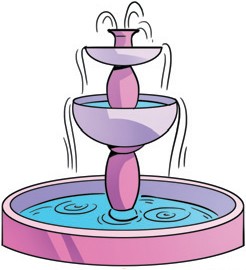 |

 Read and complete. Then listen and check.
Read and complete. Then listen and check.

The Tsaritsyno state museum and reserve is the biggest park in Moscow. Empress Catherine II of Russia loved the beauty and nature of the area, which at that time was called Bogorodskoye, and .
In 1776, the famous architect Vasily Bazhenov started to build the royal palace. Nearly ten years later, it was almost ready. But when the Empress visited the palace, and ordered the builders to destroy everything! Another architect, Matvey Kazakov started to rebuild the palace in 1786. Sadly, in 1796, all construction stopped because . It was another 200 years before the final completion of the palace, but !
Today you can see beautiful palaces, pavilions, towers, bridges, ponds and ! The beauty of the palace attracts many visitors and there are also exhibitions, concerts and music festivals that you can go to. A visit to the Tsaritsyno museum and reserve is a fantastic and enjoyable day out for all the family!
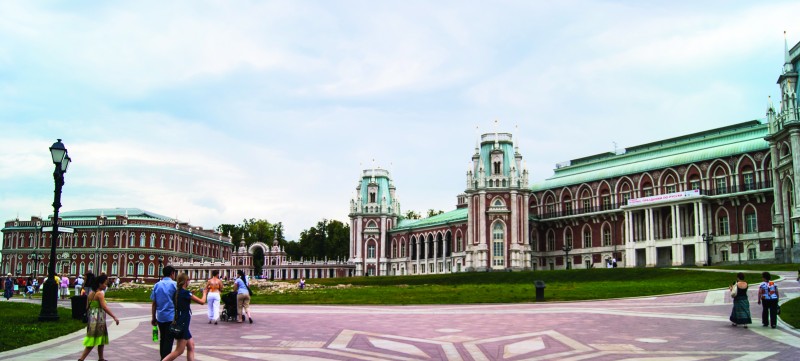
 Read again and match to make sentences.
Read again and match to make sentences.
|
1 The Tsaritsyno state museum and reserve is |
|
|
2 The famous architect Vasily Bazhenov started |
|
|
3 The Empress ordered the builders to destroy the palace |
|
|
4 Matvey Kazakov started |
|
|
5 The construction work stopped in 1796 |
|
|
6 Today there are exhibitions, concerts and |
 Complete the sentences with the correct form of the words in bold.
Complete the sentences with the correct form of the words in bold.
|
1 Catherine II of Russia was born in 1729. |
EMPEROR |
|
2 We visited the reserve and admired the of the area. |
BEAUTIFUL |
|
3 The architect ordered the to destroy everything. |
BUILD |
|
4 There are a lot of in the museum. |
EXHIBIT |
|
5 A visit to the museum is an day out for the whole family! |
ENJOY |
Think of a museum and answer the questions.
1. What is the name of the museum?
2. Where is it?
3. What do you know about its history?
4. What can you see and do there?
Over to you: Write about a museum. Use the answers to the questions in Ex. 5.
 Listen, point and repeat.
Listen, point and repeat.
 |
|
|
|
|
 |
|
 |
|
 |
|

 Read and choose. Then listen and check.
Read and choose. Then listen and check.

Join the users of Discover Moscow Photo and learn the history 1) of/in your country! Take selfies and share them 2) to/with your friends.
Discover Moscow Photo is an interesting way 3) of/to learn the history of Russia and meet famous people from the past. You can meet and take photos with great writers, poets, composers, artists and politicians.
Look 4) at/for these people with the help of clues on your mobile phone and take selfies with well-known people such 5) as/like Alexander Pushkin, Pyotr Tchaikovsky, Yuri Gagarin and many others!
By using the application you can:
• find 3D models 6) of/from famous people in the streets of Moscow;
• learn to recognise famous buildings as well 7) so/as places built by famous people;
• take and share photos!
So, what are you waiting 8) for/at ? Get your mobile phone and go out and explore the amazing city of Moscow!
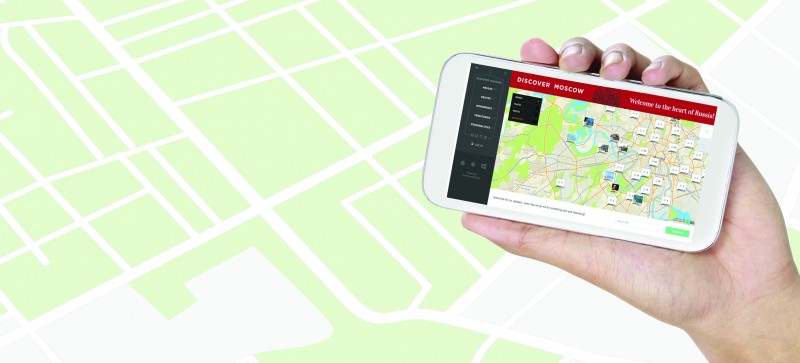
 Read again. Complete the sentences.
Read again. Complete the sentences.
1 Discover Moscow Photo helps you learn the history of .
2 You can take selfies and share them with your .
3 You can find famous people with the help of on your mobile phone.
4 You can see models of famous people in the streets.
 Read and match.
Read and match.

| A | |
| B | |
| C | |
| D |
 Read, choose and complete the titles of the monuments.
Read, choose and complete the titles of the monuments.

| 1 | |
| 2 | |
| 3 |
Over to you: Visit the Discover Moscow site, www.um.mos.ru/en/. Choose a monument or a personality. Present it to the class.
This is … . He was a(n) … . This is … . It’s in … .
 Listen, point and repeat.
Listen, point and repeat.
 |
|
|
|
|
 |
|
 |
 Listen and read.
Listen and read.

Going to school in Moscow is really cool! Moscow schools are modern and well-equipped, and are among the best in the world!
New technology is everywhere! To start with, Moscow pupils use electronic cards ‘Moskvenok’ to enter their schools and parents use an electronic mark-book to check their children’s marks. In many of the classrooms there is an overhead projector or an interactive whiteboard. Today, pupils and teachers use computers, laptops, science labs, 3D-printers and other equipment. Of course, pupils still use textbooks to study, but now they also have a chance to take virtual tours, watch educational videos and even communicate with their classmates and teachers on the Internet. It’s all so interesting!
So if Moscow schools are cool today, just imagine what they will be like in the nearest future! Perhaps pupils will fly to school in small cars which will run on energy from the sun! They won’t use notebooks for writing because they will do all their homework on personal tablets instead! They will also use special virtual reality headsets to study subjects like Geography, Physics and Biology. And what about teachers? Imagine a future where robots will sometimes teach pupils instead! The future looks very exciting for Moscow schools!

 Read again and match.
Read again and match.
|
1 Pupils use these to enter their schools. |
|
|
2 Parents use this to find their children’s marks. |
|
|
3 Pupils take these to watch education videos. |
|
|
4 Pupils may do all their homework on these in the future. |
|
|
5 Pupils may use these to study subjects like Geography, Physics and Biology. |
 Complete. Then say if the predictions are likely to happen or unlikely to happen.
Complete. Then say if the predictions are likely to happen or unlikely to happen.
1 There (not/be) any schools, but learning centres instead. They (be) open seven days a week, 24 hours a day.
2 Students (hear) and see teachers on computers. Teachers (not/be) present.
3 Students (take) a learning pill and they (know) everything straight away.
4 Robots (go) to the students’ houses every morning and (teach) them.
5 Students (visit) other planets on school trips.

Over to you: What will schools be like in the future? Make predictions. Present them to the class.
 Listen, point and repeat.
Listen, point and repeat.
 |
|
|
|
|
 |
|
 |

 Read, choose and complete. Then listen and check.
Read, choose and complete. Then listen and check.

All children love holiday time! There are lots of ways to spend your holidays: you can go to the countryside, travel with your family or .
There are many different types of summer camps to choose from. At some camps, you can sleep in tents, , go hiking and even go rafting. There are also ordinary camps, where everything is just like it is at home – comfortable rooms with a real bed and a canteen .
The most important reason to choose a camp is the programme it offers. Many children choose a programme which can help them improve their English or or learn about robotics. Every day in camp is interesting and full of fun. You can take part in expeditions or contests, go to the beach or pool, dance or !
Organising holidays at a camp is not easy – in fact, it’s quite hard work! You have to decide on the right programme, choose the camp and . It is easy to choose the right camp in Moscow, because an organisation called MOSGORTUR does it all for you. Thanks to MOSGORTUR, every year 60,000 children enjoy a fabulous time at summer camp. Happy holidays!

 Read and match. Then use the phrases to complete the sentences.
Read and match. Then use the phrases to complete the sentences.
|
1 holiday |
|
|
2 summer |
|
|
3 go |
|
|
4 comfortable |
|
|
5 computer |
1 It’s ! We can go to the countryside.
2 I want to go to a and make lots of friends.
3 We can on the Katun River.
4 If you don’t like sleeping in a tent, the camp has got rooms with in them.
5 I want to go to university and study .
 Read and choose. Then take roles and act out.
Read and choose. Then take roles and act out.
|
Woman: |
MOSGORTUR. 1) What/How can I help you? |
|
|
Max: |
Hello. I’d like 2) any/some information about summer camps. |
|
|
Woman: |
Certainly. What kind of a summer camp are you looking 3) at/for ? |
|
|
Max: |
I want to go to a camp where I can 4) improve/better my English. | |
|
Woman: |
Well, there’s the Language Summer School. You can also learn another language there if you want. | |
|
Max: |
That’s great! 5) Which/Where can I find some more information? | |
|
Woman: |
You can visit 6) my/their website. | |
|
Max: |
Thank you for your help. | |
|
Woman: |
My pleasure. |
Think of a perfect summer camp and answer the questions.
|
1 What is its name? |
|
|
2 Where is it? |
|
|
3 Where do children sleep? |
|
|
4 What kind of a programme does it offer? |
Over to you: Make a poster of your perfect summer camp. Use the answers to the questionsin Ex. 5. Present the poster to the class.





